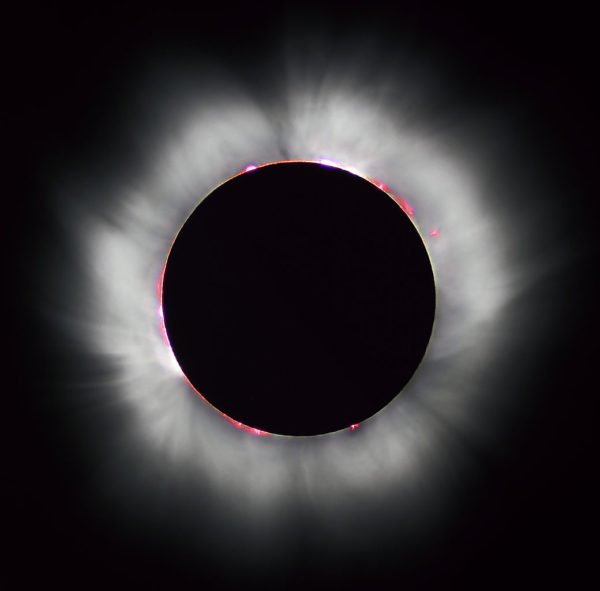The US is preparing for the spectacular sight of a total solar eclipse.
The Moon is set to pass in front of the Sun, casting a deep shadow that will sweep over the US from Oregon in the west to South Carolina in the east.
It is the first such event since 1918 where the path of darkness crosses both the Pacific and Atlantic coasts.
It is also the first total solar eclipse to make landfall exclusively in the US since independence in 1776.
People lucky enough to be directly in the path of deepest shadow (“totality”) – and blessed with a clear sky – will witness the Sun’s light blocked out for up to two minutes and 40 seconds.
Those who stand off to the side will experience a partial eclipse, which on this occasion will encompass all of North America and northern parts of South America.
There are even parts of Western Europe that will snatch a sight of the Moon’s disc taking a bite out of the Sun just as it sets.

Ring of Fire Eclipse Graces African Skies
Supermoon Lunar Eclipse Observed Around the World
Solar Eclipse: Eye experts warn of selfie danger
Total lunar eclipse: Best places to see this year’s first full lunar eclipse
Wherever people watch the total solar eclipse, they are urged to take care. Looking directly at the Sun with the naked eye can be dangerous.
Many commentators believe August 21 eclipse will prove to be the most observed, most photographed, and best documented such event in human history.
It will certainly challenge the numbers that saw the 2009 eclipse that swept across India and China.
More than 12 million people live in the 70 mile-wide path of totality. Nearly four times that many live within a two-hour’s drive, and over 200 million live within a day’s drive.
State and local authorities have been preparing for August 21 as if they were about to confront the fallout from some natural disaster.
Carbondale in Illinois has billed itself as the “Eclipse Crossroads of America” because it is in the path of darkness both on August 21 and when the next US eclipse occurs in 2024.
Given this status, Carbondale authorities anticipate a huge influx of visitors. Its regular population numbers 26,000 people, but for August 21 more than 60,000 extra car parking spaces have been organized.
It is not just urban settlements that will be stretched; the National Park Service has been bringing truck loads of portable toilets on to its lands.
Many skywatchers will be waiting until as late as possible before deciding where to go, based on up-to-date weather forecasts. Many of those who planned ahead will have consulted historical weather data.
This information suggests the highest probability of clear skies will be in the northwest. Madras in Oregon is a favorite.
The time of year and its position leeward of the Cascade Mountains mean it would expect a more than 70% chance of an unobstructed view of the eclipse. In contrast, the further east along the path of totality, the higher the historical probability of cloud.
The “eclipse show” for land-dwellers begins on the Oregon coast at 09:05 local time when skywatchers will see the Moon start to traverse the Sun. Totality is reached at 10:16 and, assuming none of the region’s famous coastal fogs are in attendance, people will get one minute and 59 seconds of full darkness.
The Moon’s shadow then races across the continent through 13 more states (less than two square kilometers of the extreme southwest of Iowa is in the path) – a journey that will take roughly 90 minutes.
The place that will experience the longest period of totality (2 minutes and 40 seconds) is about 6 miles south of Carbondale, Illinois.
The last region in the path of deepest shadow is South Carolina. The Atlantic coastal city of Charleston experiences its eclipse at 14:47 local time.
It is around this time that Europeans will be catching their partial view of the event.
Ireland, Northern Ireland, northern England and Scotland see a full partial eclipse.
